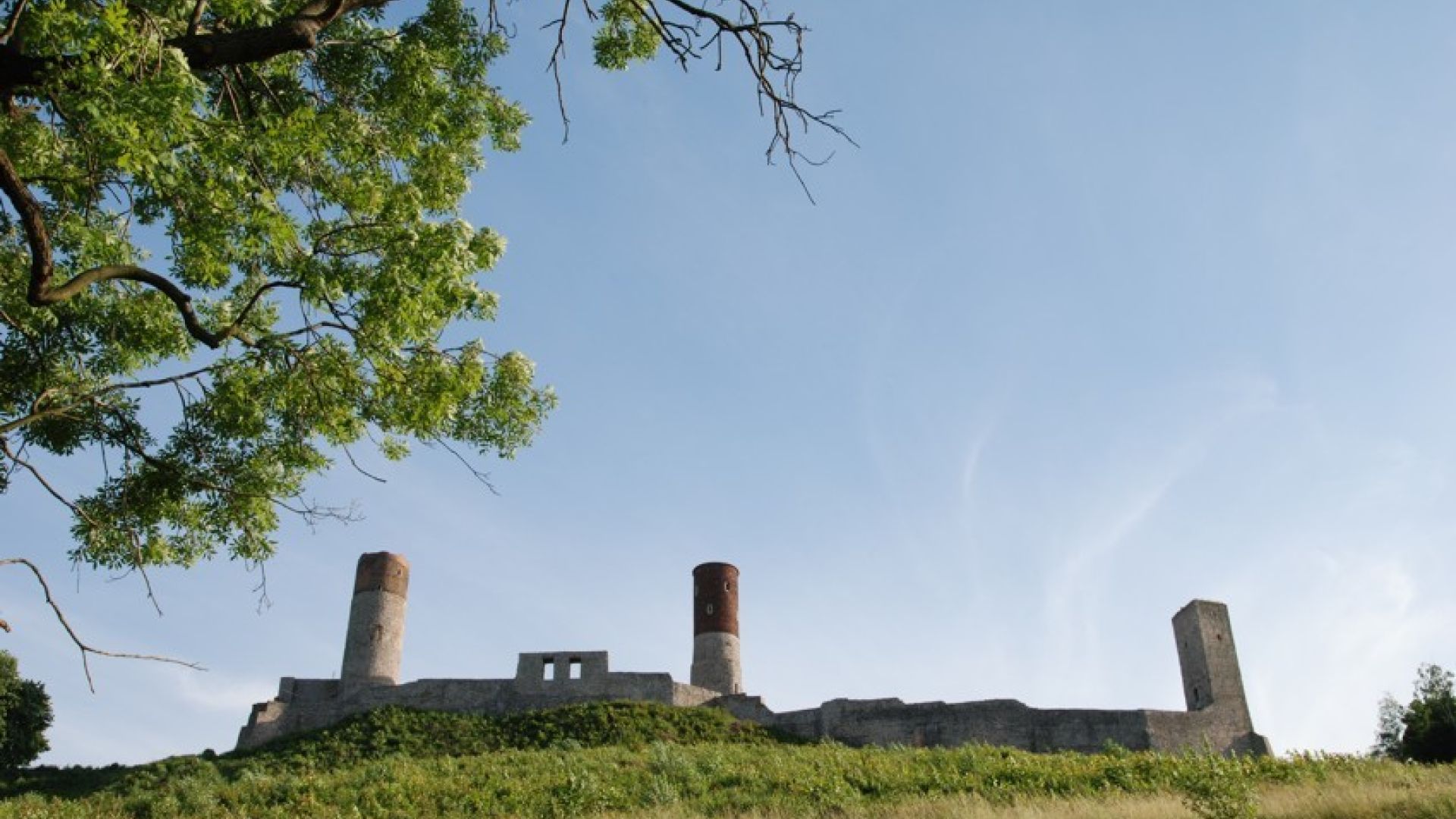On top of the highest rocky mountain in the environs, known as Mt Zamkowa, stands a ruin of the Gothic Royal Castle of Chęciny. It was erected before 1306, and king Władysław Łokietek, bishop Jan Muskate, and king Władysław II are mentioned as its founders.

The castle is an excellent example of medieval fortress situated on an elevation. In such cases, the castle walls were fitted to the elongated shape of the elevation. The castle yard was surrounded by 9-meter-high walls a with loop-holes and parapet walks for guards. The fortress of Chęciny can be divided into two parts. The upper one was built around 1300 and is closed with two round towers with walls 2-meter-thick.

The lower part was added in the late 14th century and is composed of a yard with quadrangular tower and a ogival wicket door. The locally extracted gray lime stone was used as construction material for the castle walls, although there are parts built of red and pale sandstone and brick. The towers are round and can be entered only from the upper level. The road leading into the castle was constructed close to the walls so that defenders could keep it under full control. The approaching tract was protected by a dry moat and a timber bridge that could be burnt down in case of an enemy attack. The bridge led directly into the castle gate. The massive inner tower known as donjon was the last refuge for defenders.

In addition to its military and residential functions, the castle – from the end of the 14th century – was used as prison for members of landed gentry as well as for prisoners of war of high rank. Beginning with the early 17th century, the castle hosted the office of Chęciny starosts and served as municipal and communal archives.
